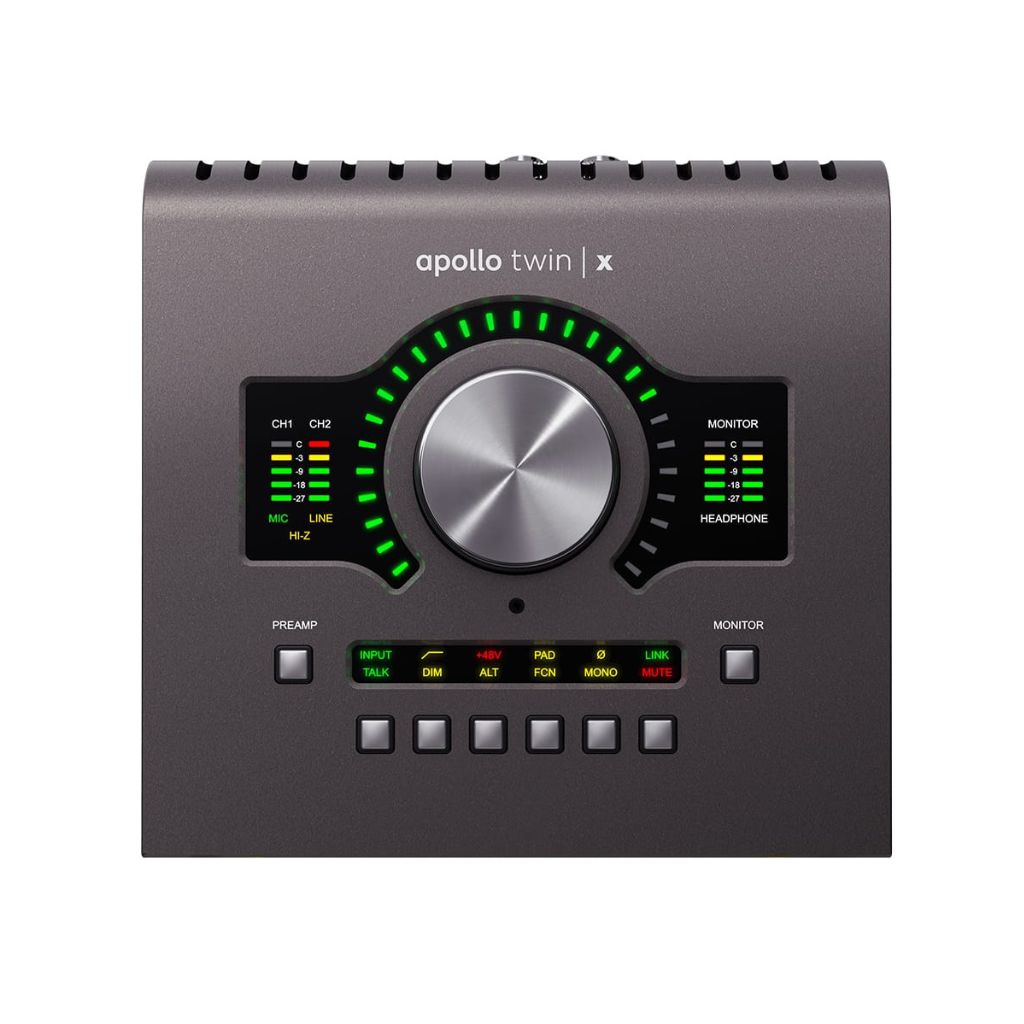Related Tags
The 10 best audio interfaces for guitarists in 2023
Red means recording.

Image: Focusrite
Featured in this article
If you want to get started recording guitar on something that isn’t just a voice-notes app, you’re going to need an audio interface – a device to take your audio signal from analogue to digital.
There’s quite an overwhelming amount of them on the market – ranging from small, portable devices that connect to smartphones, to studio behemoths with a multitude of inputs. To narrow it down, here’s a list of some of the best interfaces a guitarist can buy right now, along with what kind of recording they’ll do best at.
Focusrite Scarlett Solo Gen 4
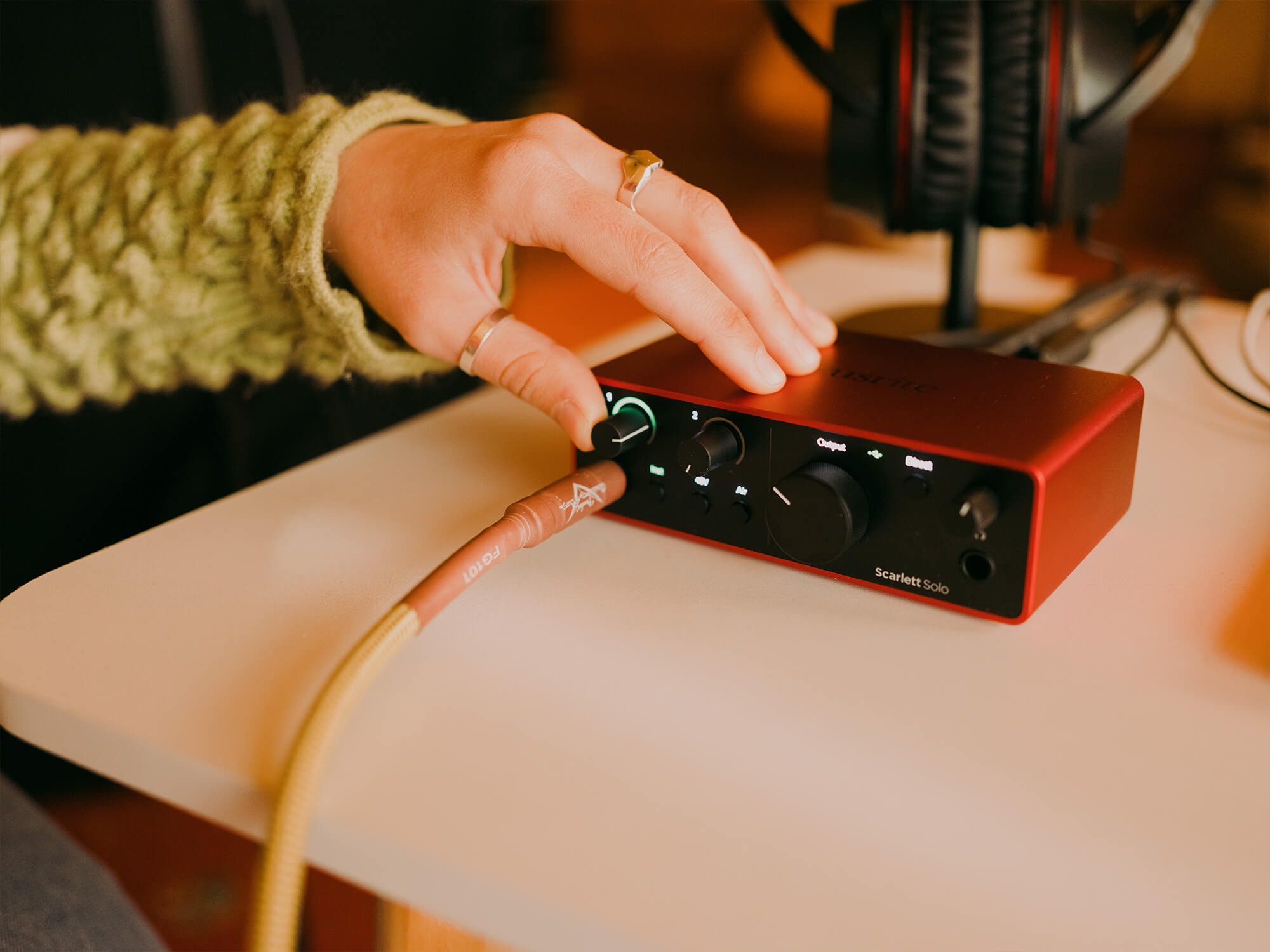
Newly updated with a fourth gen in 2023, Focusrite’s Scarlett Solo comes with a slew of improvements to its simple layout. Featuring an XLR input and a Hi-Z quarter-inch jack, you can easily plug your guitar directly into your DAW to use some virtual amps and retain the impedance response your guitar is expecting. Or, you can mic up a cabinet or acoustic guitar – or plug your guitar straight in, and hook up a mic for vocals. For generation four of the Scarlett range, Focusrite has ported over converters from its flagship RedNet products for a huge dynamic range of 120dB. Hi-Z
The interfaces now also feature a re-engineered ‘Air’ mode, which introduces a bit of harmonic character to your recordings, as well as a new headphone amp for the best experience possible when listening back to your recordings.
Find out more at focusrite.com.
Today’s best deals on the Focusrite Scarlett Solo Gen 4
IK Multimedia iRig 2
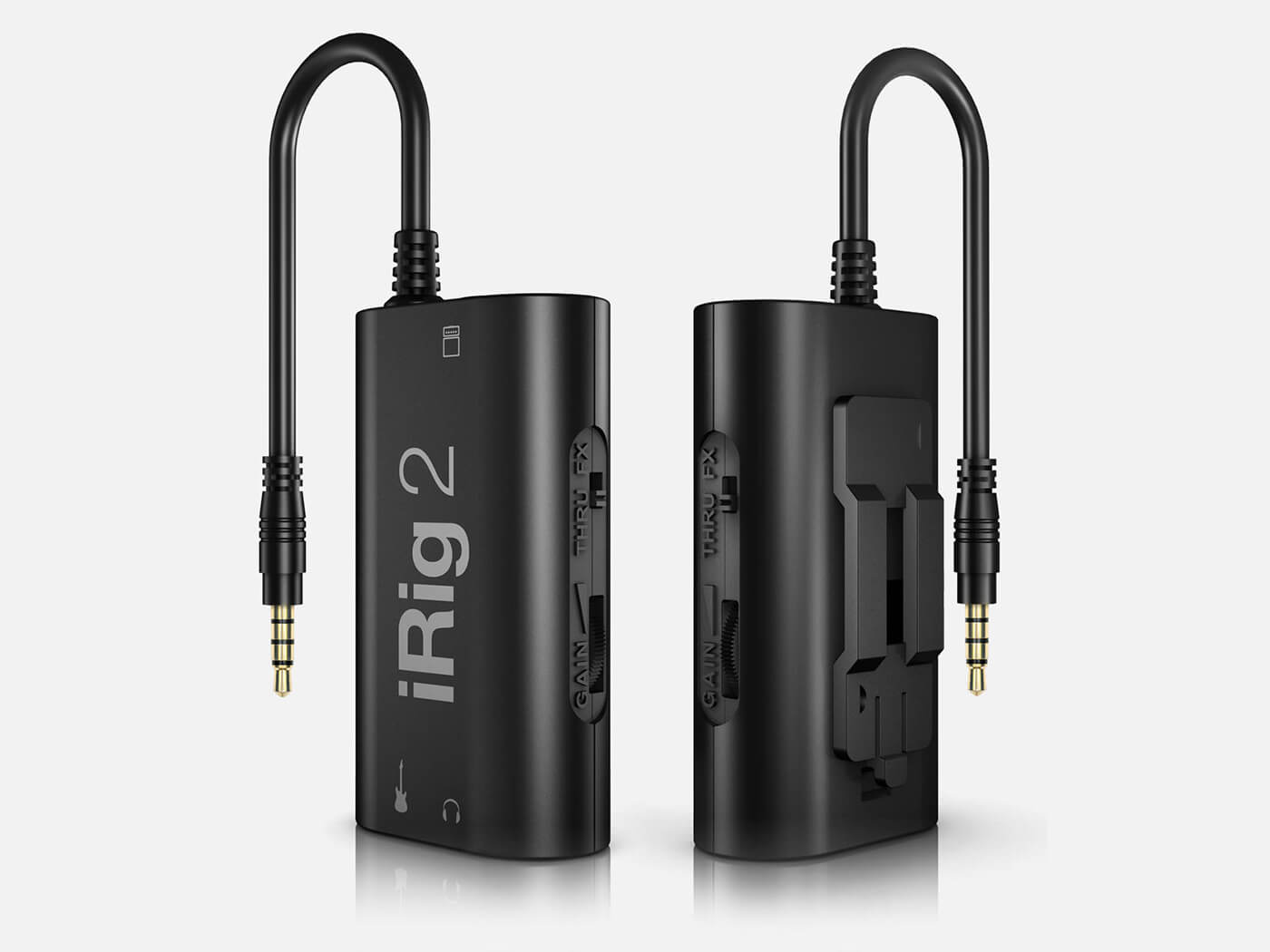
For extreme portability, IK Multimedia‘s iRig 2 is a great option. Fitting straight in a pocket, this little unit lets you run your guitar directly into an iPhone or iPad. Pair with Garageband for iOS if you want to create on-the-go guitar recordings, or with Amplitube for a portable digital guitar rig. This latest version also includes a quarter-inch amplifier output, meaning you can run Amplitube’s effects into a real amplifier.
However, the iRig 2 does limit you to direct-recording methods. There’s no XLR-input, so if you want to record a physical amplifier this might not be your best bet.
Find out more at ikmultimedia.com.
Today’s best deals on the IK Multimedia iRig 2
Audient ID4 MkII

This console-style interface from Audient comes with a combination XLR/jack input, as well as a separate quarter-inch instrument input. The latter is designed for guitarists, as it runs into a JFET preamp – mimicking the behaviour and impedance of a guitar amplifier. The microphone input runs into a Class-A Audient console mic preamp, and has switchable +48v of phantom power if you want to use a condenser microphone on your cabinet.
Because of the JFET-powered instrument input, running directly into a DAW should be a breeze, with lots of headroom and dynamic response.
While not as portable as a dongle interface, it’s still quite minute – and with sturdy construction and simple I/O, using the ID4 on the go shouldn’t be an issue.
Find out more at audient.com.
Today’s best deals on the Audient ID4
Apogee Jam+
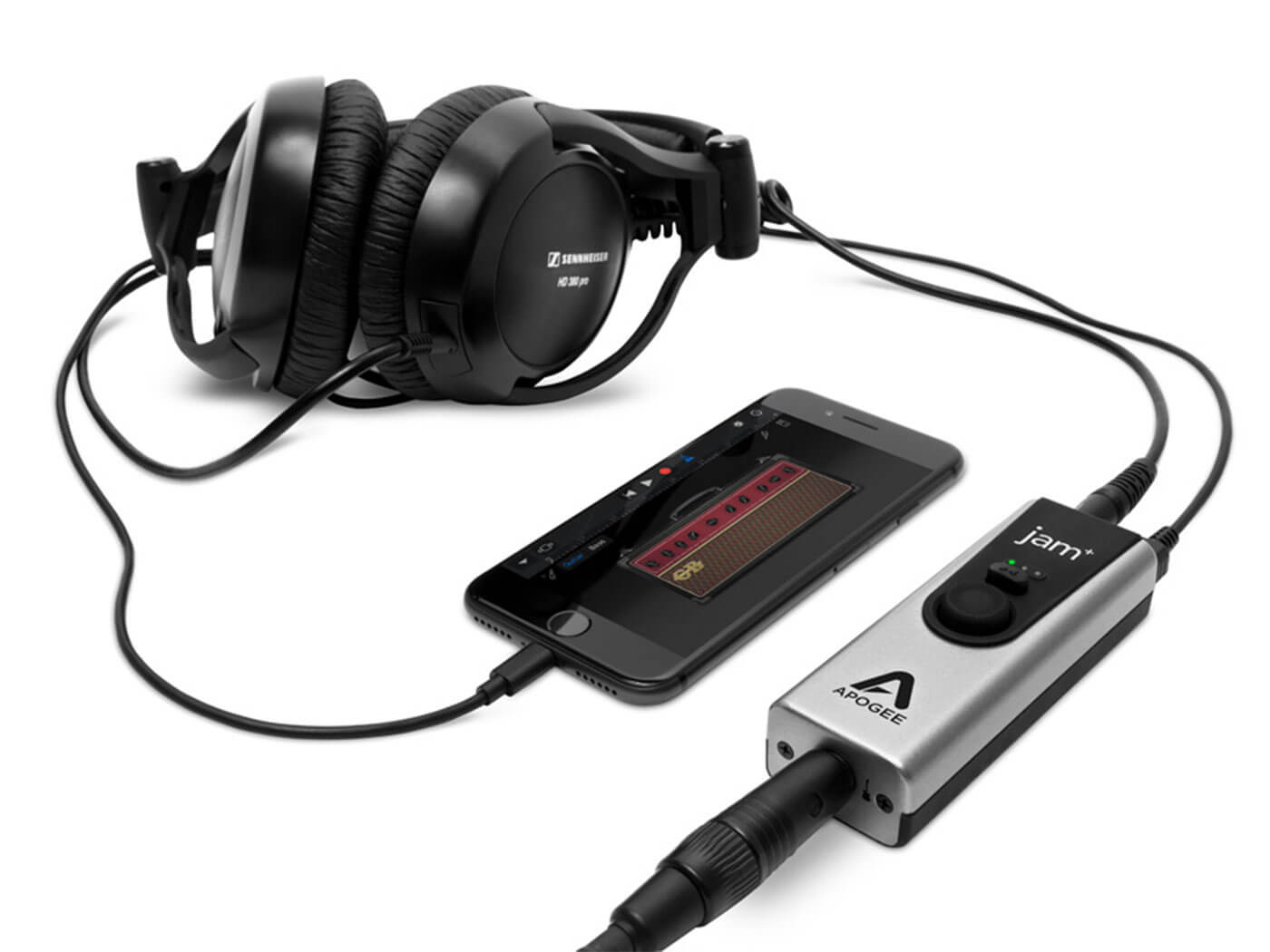
Like the iRig, Apogee‘s Jam+ boils an audio interface down to the essentials needed by guitar players. It features a single quarter-inch instrument input, a single gain knob, a USB connector and a stereo eighth-inch jack for easy monitoring with headphones or speakers.
Notably, it offers two input modes: Clean and Drive. The latter will give you an off-the-bat overdrive sound, without the need to rig up any virtual amps in your DAW. But, if you do want to go down that route, the Jam+ can connect to any Windows, Mac, or iOS device for use with any DAW.
Due to its minuscule size, this is a great interface if you either want to save on desk space, or jot down riff ideas on the go.
Find out more at apogeedigital.com.
Today’s best deals on the Apogee Jam+
Steinberg UR22C

Steinberg‘s UR22C is a dual-preamp USB C interface. Both of the inputs are XLR/Jack combos, while input 2 has the option to accept instrument-level input.
Notably for guitarists, it comes with digital signal processing powered by Yamaha’s custom-designed SSP3 DSP chip. This allows for effects-enabled zero-latency monitoring that works in every DAW. Perfect if you want to hear the exact effects you intend to apply as you record takes. It also comes with four Yamaha-designed amp models: Clean, Crunch, Drive and Lead – great for either recording scratch takes on the go, before you re-amp into a cabinet, or achieving a direct setup in your studio.
USB-C brings some benefits, too, such as reduced latency for non-direct monitoring and a whopping 192kHz sample rate.
Find out more at steinberg.net.
Today’s best deals on the Steinberg UR22C
Motu M4
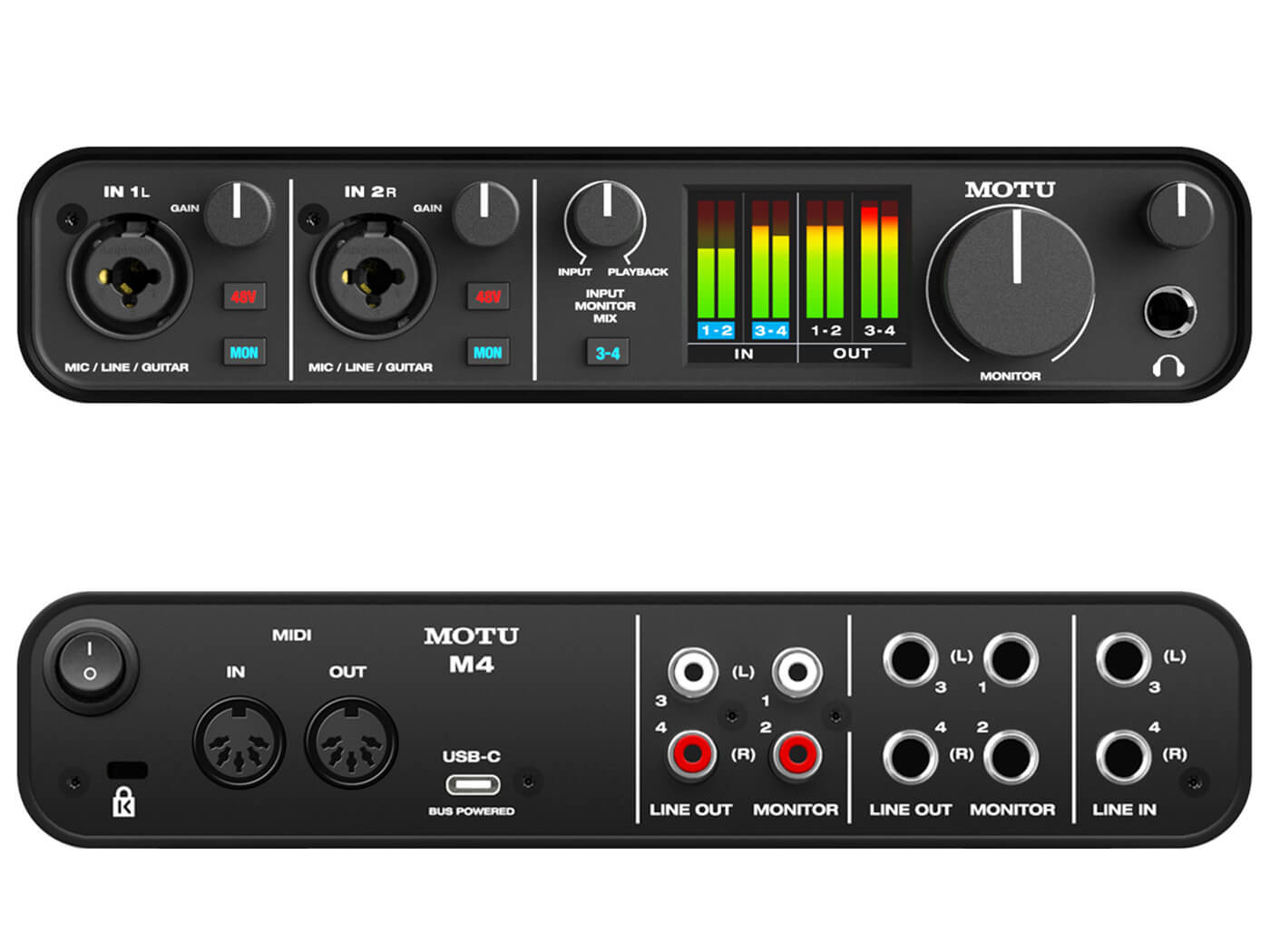
Motu‘s M4, as its name suggests, comes with four inputs – two combo XLR/quarter-inch jacks, and two quarter-inch line-ins. These allow for some nice flexibility, such as recording two guitars and two vocal tracks simultaneously. It also comes with iOS compatibility, direct monitoring (independently switchable for inputs one and two) and ultra-low latency for non-direct monitoring. Your signal makes the round trip in a speedy 2.5 ms – great if you want to record directly using software amps.
The real kicker of the M4 is the metering. While most interfaces simply have an LED that turns an angry red as you start to crank the gain too high, the M4 sports an LCD screen for detailed viewing of input levels, so you can easily turn to that sweet spot of signal-to-noise ratio.
Find out more at motu.com.
Today’s best deals on the Motu M4
TC Helicon GO Guitar
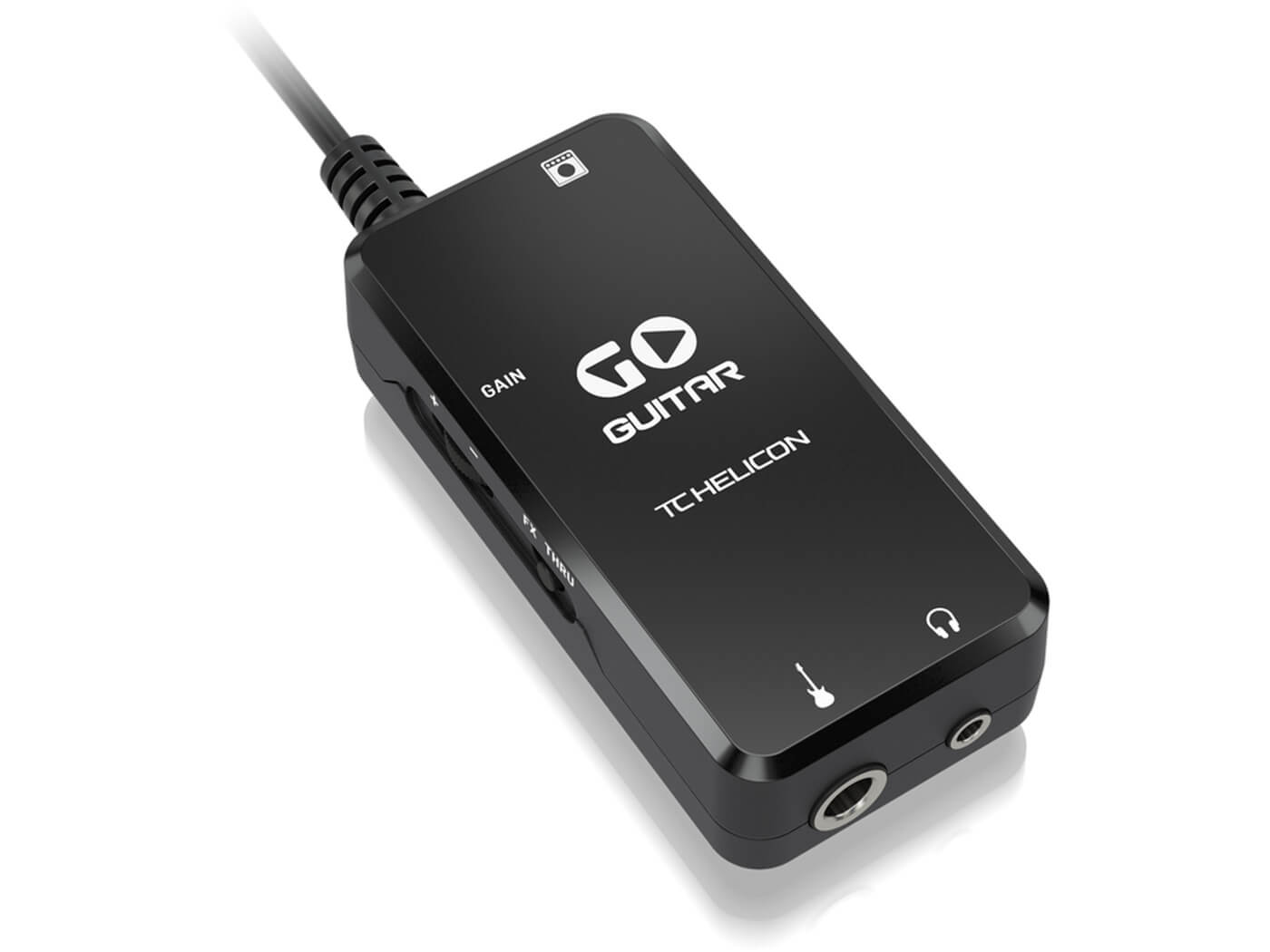
Unintentionally imperative product name aside, the Helicon GO Guitar provides a great middle-ground between a simple dongle interface and a more fully-fledged one. While it has no XLR jack, like the iRig, it does work through USB (rather than through a phone headphone jack). This means you won’t need to buy two interfaces to record on both your phone and your computer – provided you only need one quarter-inch input.
Find out more at tc-helicon.com.
Today’s best deals on the TC Helicon GO Guitar
Universal Audio Apollo Twin Duo X
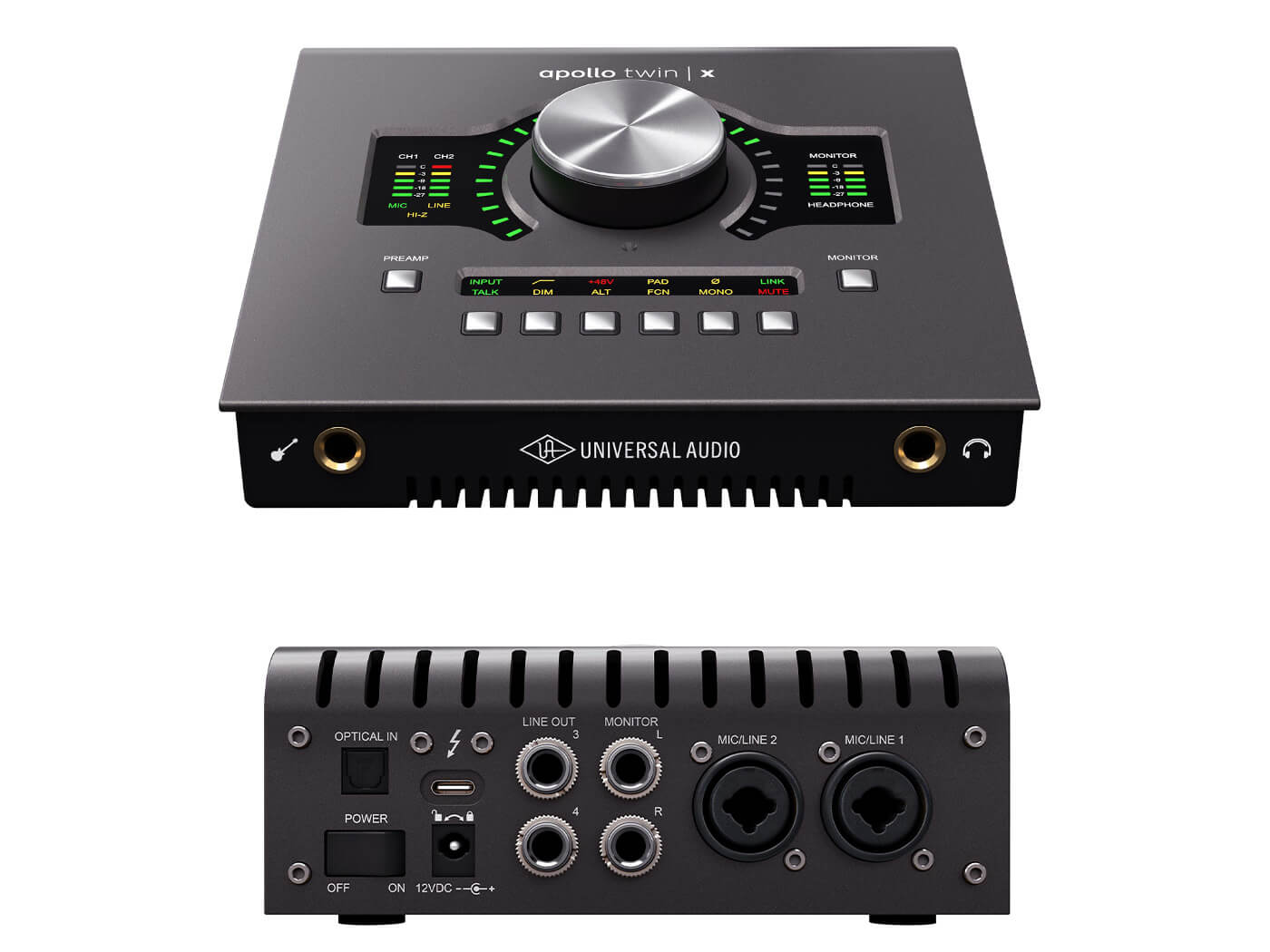
As we leap to the other end of the price spectrum, consider how much you’re willing to spend to get a volume control as satisfying to look at as the Twin Duo X’s. But sleek aesthetics aren’t the only thing this Universal Audio interface offers – Thunderbolt operation means ultra-speedy performance, and the ability to Cascade up to 4 Apollo interfaces and 6 UAD-2 devices over Thunderbolt.
It also comes with a bundle of high-end UA plug-ins, allowing you to get the sound of a full analogue, tube-driven music studio while saving money and space for, let’s face it, more guitars. These guitars can then be plugged into the quarter-inch instrument-in on the front of the unit for direct use with amplifier plug-ins and so on.
The Twin Duo X’s mic preamps also offer something called ‘Unison,’ which emulates a host of classic studio preamps. In all, the Twin Duo X is for a guitarist who’s disappeared down the rabbit hole of desperately seeking piles of studio gear to get that tone Steve Albini used on that record, but doesn’t want a desk that looks like a spaceship cockpit.
Find out more at uaudio.com.
Today’s best deals on the Universal Audio Apollo Twin Duo X
Solid State Logic SSL2
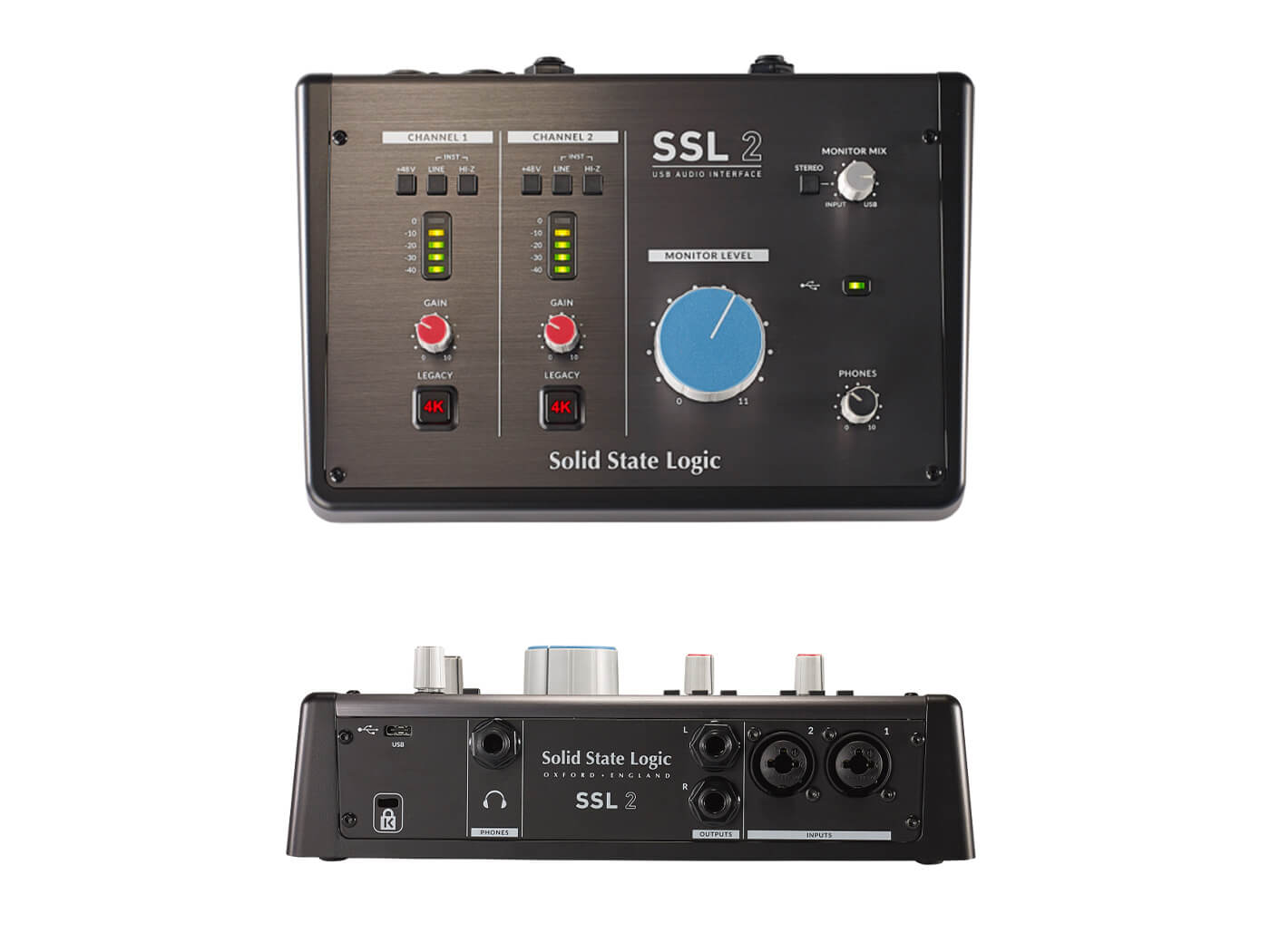
Similarly to name-dropping Steve Albini, the word ‘analogue’ has a lot of value to some guitarists. They might be interested in what the SSL2 has to offer, which is two channels enhanced by what Solid State Logic calls the ‘Legacy 4K’ system.
This models the characteristics of an SSL 4000 console, bringing some lively analogue saturation to your input sources. Great if you want to indulge in a bit of gear-worship but don’t quite want to dive into something like the Apollo Twin.
Other than the 4K button, the interface offers two XLR/quarter-inch jack driving channels, alongside direct monitoring and detailed metering.
Find out more at solidstatelogic.com.
Today’s best deals on the Solid State Logic SSL2
PreSonus Studio 1824C
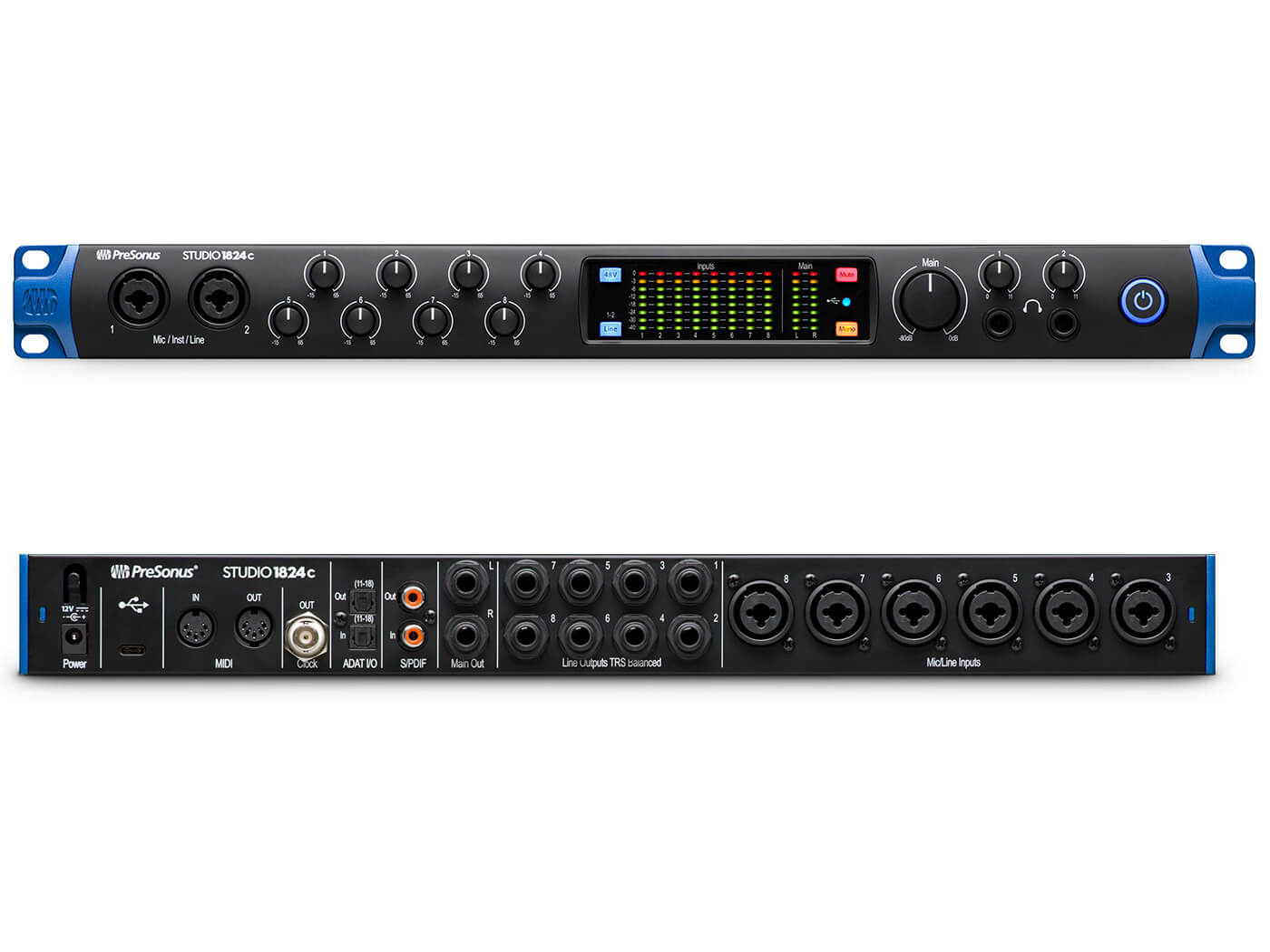
This is where things get really serious. If you’re a bedroom guitarist, this is overkill. Unless you plan on using an abundance of microphones on an amplifier, PreSonus‘ 1824C is better suited for a guitarist looking to record their band.
With eight mic inputs, you’ve got a lot of options for live multi-track recording – perhaps you want to record two guitar tracks, and both need two mics on the cab, but you still want room left for micing up the drums. Or perhaps you’re recording your eight-piece guitar orchestra. Or perhaps you want to achieve some extremely cavernous reverb with eight microphones placed at 10-metre intervals away from the amp in your local abandoned cathedral.
In any case, the real benefit of an interface like this becomes apparent after the live recording is done. You’ll be able to create a much more detailed mix using separate stems, compared to combining tracks with a mixer before they hit an interface with fewer inputs.
Find out more at presonus.com.
Today’s best deals on the PreSonus Studio 1824C
For more buyers’ guides, click here.

